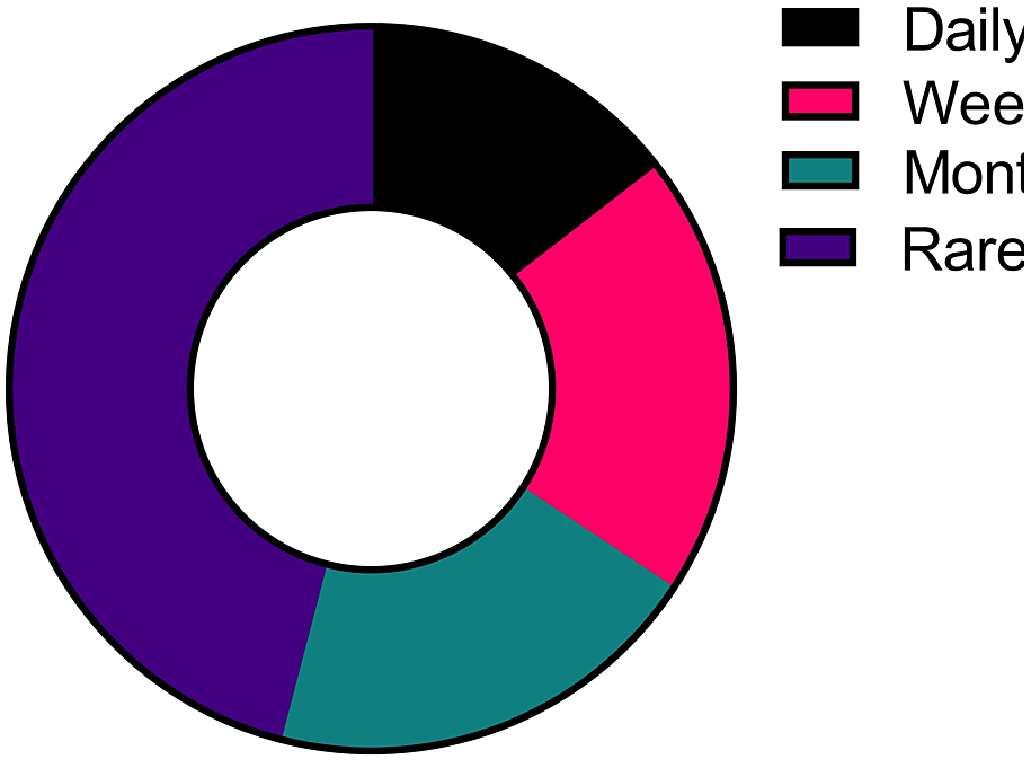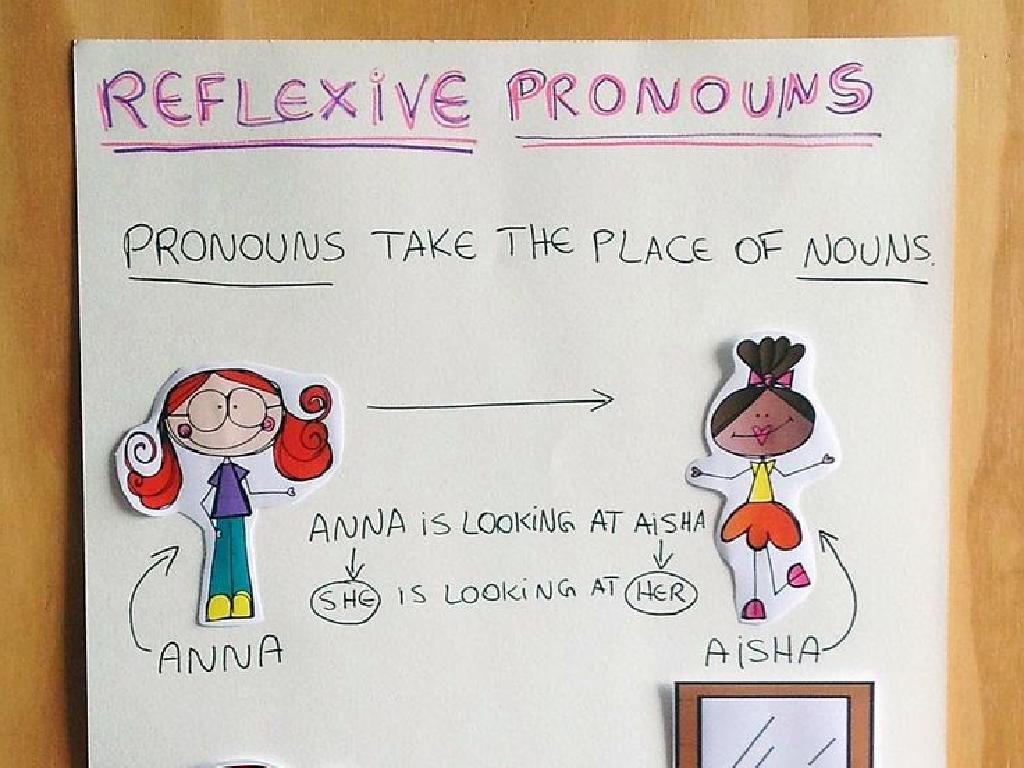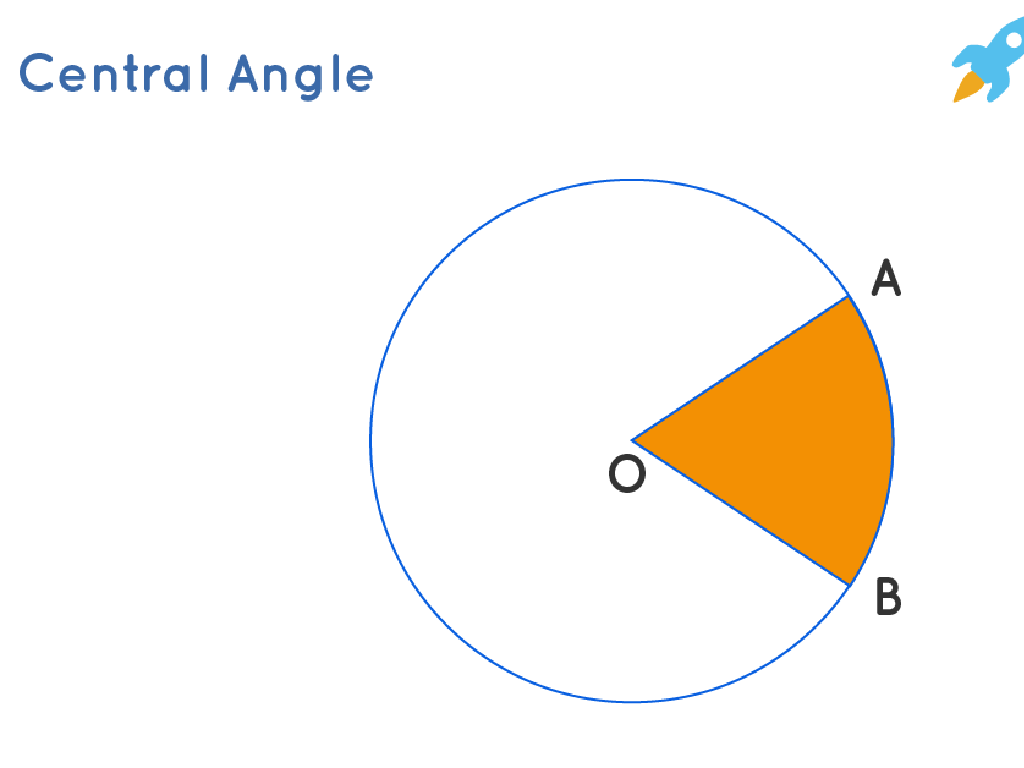Area Of Compound Figures Made Of Rectangles
Subject: Math
Grade: Seventh grade
Topic: Perimeter And Area
Please LOG IN to download the presentation. Access is available to registered users only.
View More Content
Exploring Area of Compound Figures
– Understanding area and perimeter
– Area is the space inside a shape, perimeter is the boundary
– Today’s focus: Compound figures
– Compound figures are made up of multiple simple shapes
– Rectangles: Building blocks of area
– Rectangles are simple shapes with length and width
– Calculating area of compound shapes
– Add areas of individual rectangles to find total area
|
Begin the lesson by revisiting the concepts of area and perimeter to ensure a solid foundation. Explain that today’s lesson will focus on compound figures, which are shapes made up of two or more simple shapes – in this case, rectangles. Emphasize that understanding the area of rectangles is key, as they will use this knowledge to calculate the area of more complex shapes. Demonstrate how to break down a compound figure into individual rectangles, calculate the area of each one, and then combine these areas to find the total area of the compound figure. Provide examples and encourage students to visualize the process by drawing the shapes and labeling the dimensions.
Understanding Area of Surfaces
– Area: size of a surface
– Measured in square units
– Units like square meters (m²), square centimeters (cm²)
– Real-life applications of area
– Used in flooring, painting walls, buying land
– Calculating area of rectangles
– Add areas of individual rectangles for compound shapes
|
The concept of area is fundamental in mathematics and is particularly relevant in real-world situations. Area represents the size of a two-dimensional surface and is measured in square units, which could be square meters for larger surfaces or square centimeters for smaller ones. Understanding area is crucial for practical tasks such as determining the amount of material needed for flooring, the quantity of paint required to cover walls, or the size of a plot of land. When dealing with compound figures made up of rectangles, students can calculate the total area by finding the area of each rectangle and then summing them up. This slide aims to introduce the concept of area and its significance in everyday life, setting the stage for more complex applications involving compound figures.
Recap: Calculating Area of a Rectangle
– Area formula for rectangles
Area = length × width, a basic formula in geometry.
– Example: 5m x 3m rectangle
A rectangle with a length of 5m and width of 3m.
– Step-by-step calculation
Multiply length by width: 5m * 3m = 15m².
– Practice together in class
|
Begin with a quick review of the formula for finding the area of a rectangle, which is a fundamental concept in understanding the area of compound figures. Provide a clear example with dimensions that are easy to work with, such as a 5m by 3m rectangle. Walk through the calculation process step by step, ensuring that students understand that area is the product of length and width. Engage the class by solving this example together, encouraging participation and answering any questions that arise. This will prepare them for more complex problems involving compound figures made up of multiple rectangles.
Identifying Compound Figures
– Define compound figures
– A shape consisting of two or more rectangles combined.
– Recognize rectangles in compounds
– Look for rectangles sharing sides within a complex shape.
– Real-life compound figure examples
– Floor plans, window panes, and tiled walls.
– Practice with everyday objects
– Measure areas of a book cover, phone screen, or a tabletop.
|
This slide introduces students to the concept of compound figures, which are shapes made up of two or more rectangles. Emphasize the importance of being able to identify the simpler rectangles that make up a compound figure. Provide relatable examples such as floor plans, where rooms are often rectangular, or window panes which are put together to form the whole window. Encourage students to find compound figures in their surroundings and practice calculating the area by breaking them down into rectangles. This will help them understand how to approach complex shapes by simplifying them into more manageable parts.
Breaking Down Compound Figures
– Divide figures into rectangles
– Look for straight lines to form rectangles
– Measure lengths and widths
– Use a ruler to find each rectangle’s dimensions
– Practice with an example
– We’ll work through a compound figure as a class
– Understand area calculation
|
This slide is aimed at teaching students how to approach compound figures by breaking them down into simpler, more manageable rectangles. Start by explaining that many complex shapes can be divided into a combination of rectangles. Show them how to look for straight lines that can indicate the borders of each rectangle. Then, guide them on how to accurately measure the length and width of each rectangle using a ruler. After explaining the concept, engage the class with a hands-on example where they can apply what they’ve learned. This will help solidify their understanding of how to calculate the area of a compound figure by adding up the areas of each individual rectangle. Make sure to provide clear instructions and check for understanding throughout the activity.
Calculating Area of Compound Figures
– Apply area formula to each rectangle
– Area = length × width for each rectangle
– Sum areas of all rectangles
– Add the areas to find total figure area
– Adjust for any overlaps
– Subtract the shared area if rectangles overlap
– Example: L-shaped figure
– Calculate area of an L-shape by dividing it into two rectangles and following the steps
|
When teaching students to calculate the area of compound figures, start by revisiting the area formula for rectangles. Have them practice on individual rectangles before moving on to compound figures. Emphasize the importance of adding the areas of each rectangle to find the total area of the compound figure. However, make sure they understand how to handle overlapping areas, as they should only be counted once. Use an L-shaped figure as a class example to demonstrate how to divide a compound figure into rectangles, calculate each area, and then adjust for any overlaps by subtracting the shared area. This will prepare them for more complex shapes and enhance their spatial reasoning.
Adding and Subtracting Areas of Rectangles
– Add areas for combined spaces
– Subtract for overlapping sections
– Subtract the overlapped area once, not twice
– Handle common parts carefully
– Identify shared boundaries to avoid miscalculations
– Example: Total area calculation
– A figure with two rectangles, find individual areas, add or subtract as needed
|
This slide introduces the concept of calculating the area of compound figures composed of rectangles. Students should understand that they need to add the areas of individual rectangles when they are combined to form a larger shape. However, if rectangles overlap, the area of the overlapping section should be subtracted to avoid counting it twice. It’s crucial to pay attention to common parts or boundaries to ensure accurate calculations. The example provided should be a compound figure where students can practice finding the total area by adding and subtracting as necessary. Encourage students to draw all individual rectangles, label their dimensions, and calculate each area before combining them. This will help them visualize the process and understand the importance of each step.
Class Activity: Create Your Compound Figure
– Draw a compound figure of rectangles
– Calculate area of each rectangle
– Area = length × width for each rectangle
– Find the total area of the figure
– Add all rectangle areas for total area
– Share your figure and calculations
|
In this activity, students will apply their knowledge of area calculation to create a unique compound figure composed of multiple rectangles. Provide students with graph paper to assist in drawing precise figures. Encourage creativity but ensure that the figures are composed of clear rectangles. Students should label the length and width of each rectangle, calculate the area of each one, and then sum these areas to find the total area of the compound figure. After completing the calculations, students will share their figures with the class, explaining their process and results. This activity will reinforce their understanding of area calculation and how it applies to composite shapes. Possible variations of the activity could include using different units of measurement, incorporating rectangles with different orientations, or challenging students to find the area of figures with missing dimensions using the total area.
Review and Q&A: Area of Compound Figures
– Recap on compound figures
Compound figures are shapes made up of multiple rectangles.
– Open floor for questions
– Share your observations
Did you find any patterns or tricks while calculating areas?
– Discuss any difficulties
Let’s talk about parts that were tricky and solve them together.
|
This slide aims to consolidate the students’ understanding of calculating the area of compound figures made up of rectangles. Begin by summarizing the key points of the lesson, such as how to break down a compound figure into individual rectangles and calculate each area separately before summing them up. Encourage students to ask questions about any part of the lesson they found challenging. Facilitate a discussion where students can share any interesting methods or observations they discovered during their practice. Address any common difficulties that students may have encountered, and provide additional examples or strategies to help overcome these challenges. This interactive session will help reinforce their learning and ensure they feel confident in applying these concepts to solve problems.
Homework: Mastering Compound Areas
– Complete the area worksheet
– Focus on compound figures
– Compound figures made up of rectangles
– Show all calculation steps
– Include formulas used for each figure
– Prepare for class discussion
– Share your answers and methods
|
This homework assignment is designed to reinforce the concept of finding the area of compound figures composed of rectangles. Students should complete the provided worksheet, which includes various compound figures. They must show all the steps taken to calculate the area, including the formulas used for each individual rectangle before summing them to find the total area. In the next class, students will be expected to discuss their solutions, explaining the process they followed and any challenges they encountered. This will help them to solidify their understanding and allow for peer learning. The teacher should prepare to facilitate the discussion, ensuring that each student has an opportunity to participate and that key learning points are highlighted.





